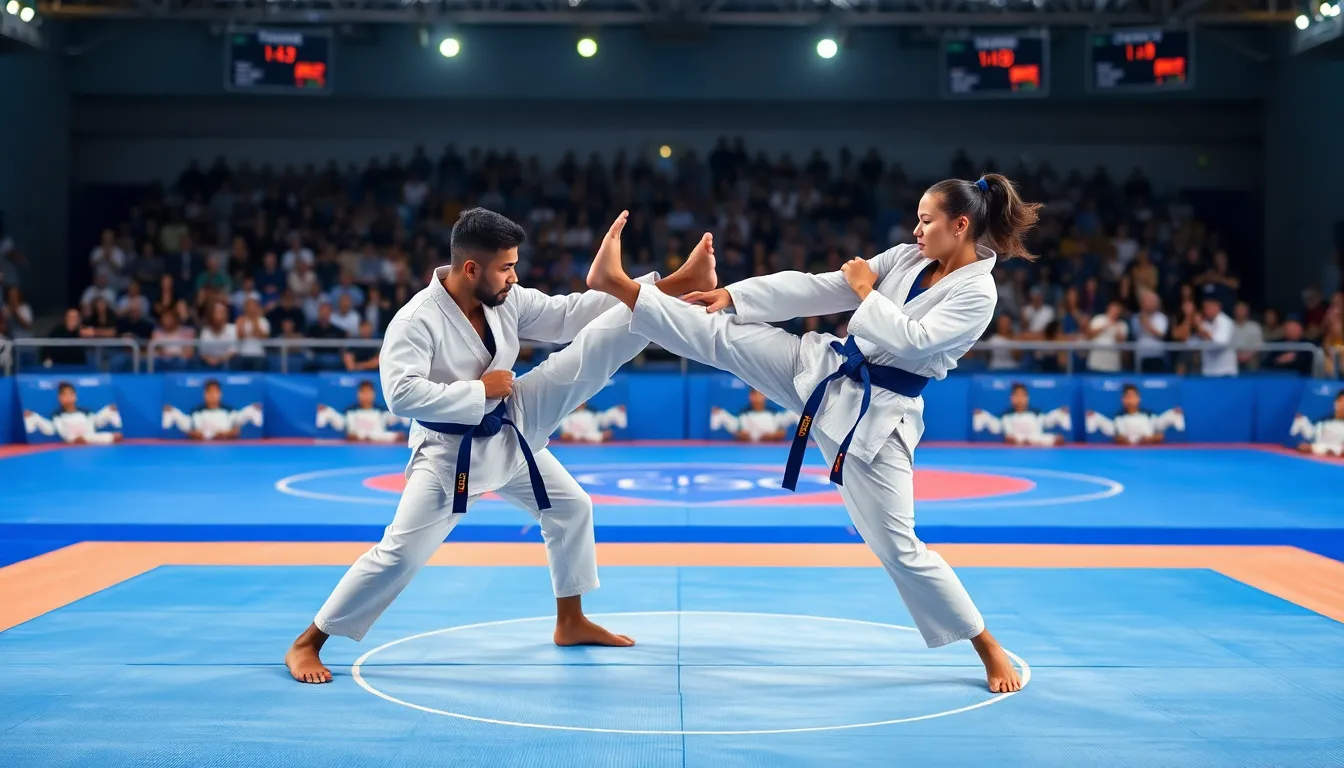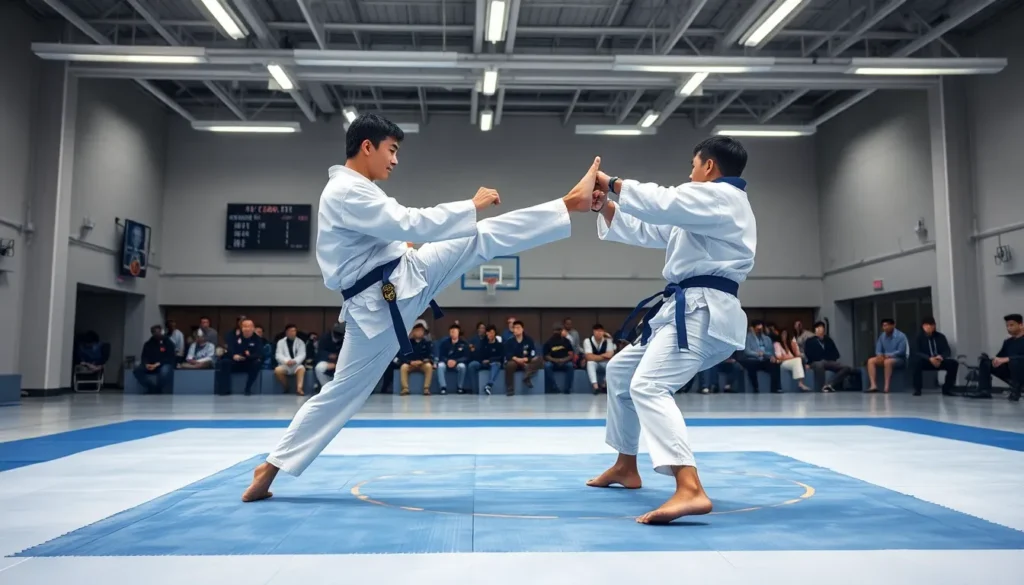Taekwondo, the martial art that can turn anyone into a flying kick expert (or at least give them a decent roundhouse) is not just about flashy moves and cool uniforms. It’s a world filled with intricacies, strategy, and yes, some bemusing moments when someone accidentally kicks the air instead of their opponent. If you’re curious about what goes down in a taekwondo bout or looking to sharpen your knowledge for your next training session, you’re in for a treat. Grab your dobok, and let’s jump into all the must-know details.
Table of Contents
ToggleUnderstanding Taekwondo Bouts

The Structure of a Taekwondo Bout
In the world of taekwondo, bouts are the heart of competition. A typical bout consists of three rounds, each lasting two minutes, with a one-minute break between them. Players face off, seeking to score points through various techniques, including kicks, punches, and controlled strikes. The bouts occur on a square mat, delineated by lines that mark the scoring zones and push-out boundaries.
Scoring System in Taekwondo Bouts
Understanding how points are scored can seem like deciphering an ancient language, but it’s quite straightforward. Points are awarded for successful strikes to the head and body, with headshots earning two points more due to their challenging nature. Judges closely monitor contestants for proficiency, control, and technique, bringing a whole new meaning to the term “kicking it up a notch.” If it wasn’t evident already, knocking your opponent with a spin kick or a flying sidekick is what fuels the scoreboards.
Types of Taekwondo Bouts
Olympic Taekwondo vs. Traditional Taekwondo
Two heavyweight contenders dominate the taekwondo arena: Olympic and traditional taekwondo. Olympic taekwondo is all about high-energy, action-packed bouts that showcase speed and agility, with a focus on point-scoring techniques and safety gear. Training tends to be intense and competitive, preparing athletes for the international stage.
On the flip side, traditional taekwondo involves a broader range of techniques, focusing heavily on forms (poomsae) and self-defense. While both styles share a passion for the art, they cater to different kinds of practitioners. Olympic fighters must master the latest strategies to stay ahead, while traditional practitioners might lean into the philosophical aspects of taekwondo.
Strategies for Success in Taekwondo Bouts
Mental Preparation Techniques
Success in taekwondo bouts goes beyond throwing punches: it requires a strong mental game. Athletes often employ visualization techniques, imagining themselves executing perfect kicks and dodging blows as if they were in a high-stakes movie. Mindfulness and meditation can also help reduce performance anxiety and enhance focus during those crucial moments in the ring.
Physical Conditioning for Competitors
Let’s not ignore the physical side. Competitors invest hours in strength training, flexibility, and stamina-building exercises. After all, endurance can be the difference between a glorious victory and a devastating defeat. High-intensity interval training (HIIT) is popular, helping athletes build explosive strength needed for those rapid-fire kicks and evasions.
Latest Innovations in Taekwondo Training
Incorporating Technology in Training
The landscape of taekwondo training is evolving, and technology is at the forefront. From sophisticated motion analysis software that helps athletes refine their technique to wearable fitness trackers monitoring heart rates and caloric burn, technology is making waves. Virtual reality (VR) training is also gaining traction, providing a unique way for practitioners to simulate bouts and practice techniques in a controlled environment. Trainers are now able to analyze performance data like never before, leading to tailored programs that enhance effectiveness and safety.
The Role of E-books in Taekwondo Training
Benefits of E-books for Practitioners
E-books have become a game-changer for many martial artists looking to expand their knowledge and refine their skills. Unlike traditional books, e-books provide immediate access to a wealth of information right at your fingertips, perfect for when that random taekwondo question pops into your mind. With the ability to highlight, annotate, and easily search content, practitioners can learn about techniques, philosophies, and strategies more effectively.
Key Titles to Consider
Not all e-books are created equal, though. For insight into effective training strategies, consider titles such as “Taekwondo: Steps to Success” or “The Ultimate Guide to Taekwondo Training.” These books are not only written by credible authors but also packed with useful techniques and drills designed for both beginners and seasoned fighters.






